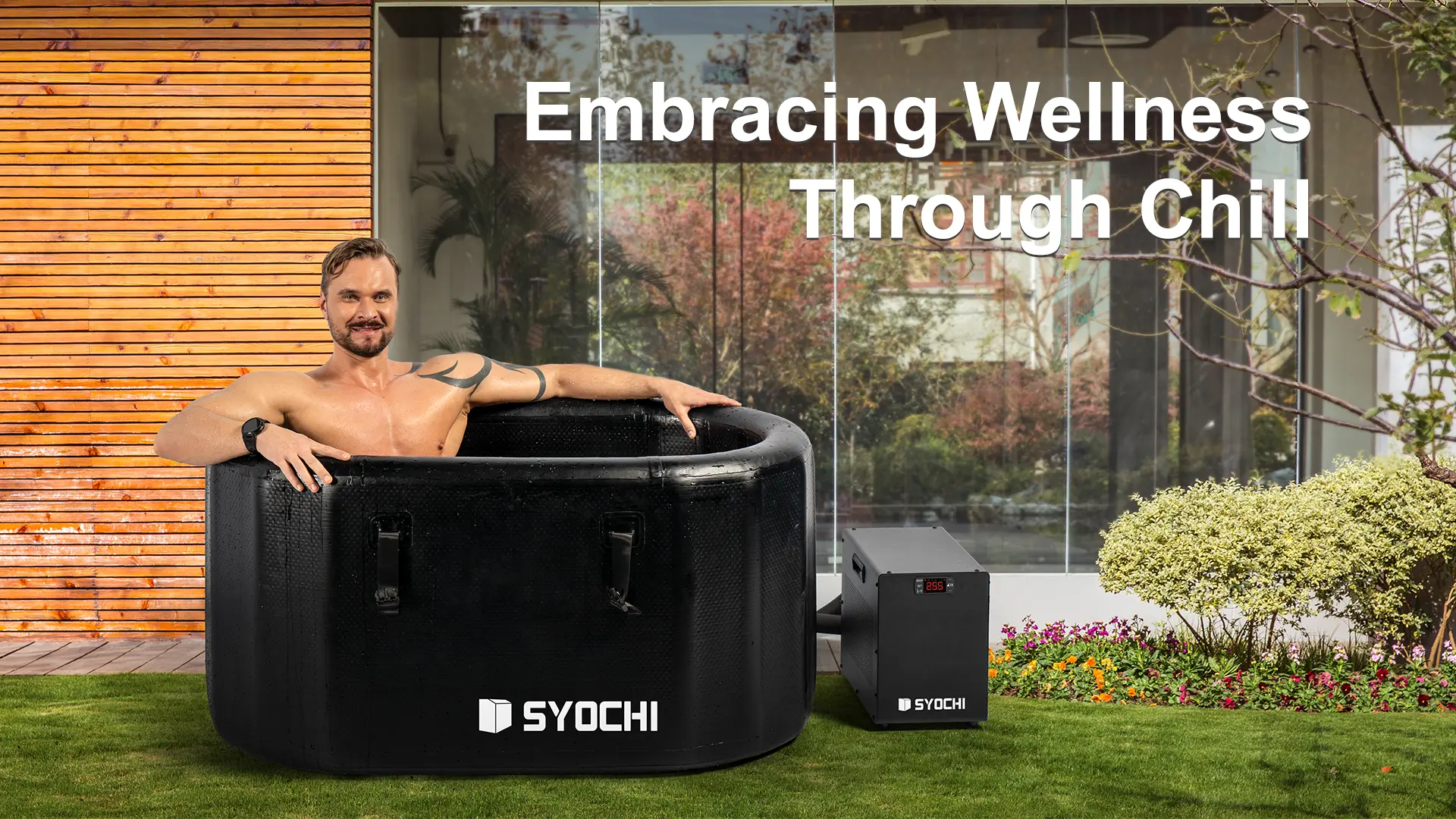So you’ve heard about ice baths or cold plunge—maybe from that buff guy at the gym, your yoga teacher, or TikTok’s latest wellness influencer who swears dipping into a tub of icy water at 6 a.m. changed their life. But before you go dumping bags of ice into your bathtub like a crazy penguin, let’s break it all down. This is your ultimate guide to ice baths—without the scientific jargon and with a lot more personality.
What Even Is an Ice Bath?
An ice bath is exactly what it sounds like: a cold bath with water temperatures typically ranging between 5–15°C (41–59°F), sometimes even colder. The idea is to immerse your body (or most of it) into this chilly water for a few minutes to get all kinds of physical and mental benefits.
Why Would Anyone Do Ice Bath?!
Great question. Turns out freezing your butt off has some real perks:
Muscle Recovery: Cold water reduces inflammation and muscle soreness. It’s why athletes swear by it after training.
Mental Toughness: Stepping into an ice bath is not for the faint of heart. You train your brain to handle stress like a champ.
Improved Mood: Cold exposure triggers dopamine release—a.k.a. your brain’s “happy juice.”
Better Sleep: A cold soak before bed? Some say it helps them sleep like a frozen baby.
How Long Should You Stay In Ice Bath Tub?
Good news: you don’t have to sit there like a popsicle forever. Start with 2–3 minutes. If you’re feeling brave (and not turning blue), you can slowly work your way up to 10–15 minutes max. Wim Hof might do 30 minutes, but you’re not Wim Hof. Chill.
What’s the Right Temperature For Ice Bath?
Here’s the cheat sheet:
Beginner: 10–15°C (50–59°F)
Intermediate: 5–10°C (41–50°F)
Advanced (aka Crazy): Below 5°C (<41°F)
Who Should NOT Try Ice Baths?
While ice baths are cool (literally and figuratively), they’re not for everyone:
· People with heart conditions
· Those with Raynaud’s disease
· Folks who just ate a giant hot pot
Always talk to your doctor before turning into a human ice cube.
You can check the previous for more infomation:
Ice Baths Guidance of beginner: do or not
Ice Bath at Home: Budget or Bougie?
You’ve got options—from DIY to spa-level luxury.
Budget Option: The Bathtub Special
Fill your tub with cold water, throw in some ice (yes, from your freezer), and boom—you’ve got an ice bath.
Want the Rolls-Royce of cold therapy? There are machines that cool and filter water automatically. Just plug and freeze.
For more ice bath chiller infomation, welcome to check the ice bath chiller unit series
When’s the Best Time to Ice Bath?
Post-workout is classic—you reduce inflammation and speed up recovery. But some people love a morning dip to kick start their brain.
Just don’t do it after a big meal, or your stomach might throw hands.
Pro Tips to Not Die of Shock
Start with cold showers to build tolerance
Control your breathing—long slow breaths = calm brain
Don’t dunk your head, unless you know what you’re doing
Set a timer—you lose track of time when you’re freezing
Common Myths—Busted!
1.Myth: Ice baths burn fat like crazy
Not exactly. It helps metabolism a bit, but don’t skip leg day just yet.
2.Myth: Longer = better
Nah. Overdoing it can mess you up. Stick to 10–15 minutes max.
3.Fun Facts to Impress Your Friends
Ice baths have been around since ancient Rome. Gladiators loved 'em.
Wim Hof (a.k.a. “The Iceman”) made cold exposure trendy again.
Cold plunging is super trendy now, especially with biohackers, athletes, and wellness fanatics.
So… Does Ice Bath Science Approve?
Yup. Loads of studies support benefits like reduced muscle soreness, improved circulation, dopamine boosts, and more. But as with anything, consistency and safety matter more than just jumping in blindly.
Final Word: Chill, But Don’t Freeze
Ice baths are a cool (literally) way to improve your physical recovery, mental clarity, and stress tolerance. But remember—this isn’t a test of how much pain you can take. It’s about balance, breath, and learning how to stay calm in chaos (and cold).
So go on—be brave, breathe deep, and take the plunge with SYOCHI.
 EN
EN
 AR
AR
 BG
BG
 HR
HR
 CS
CS
 DA
DA
 NL
NL
 FI
FI
 FR
FR
 DE
DE
 EL
EL
 HI
HI
 IT
IT
 JA
JA
 KO
KO
 NO
NO
 PL
PL
 PT
PT
 RO
RO
 RU
RU
 ES
ES
 SV
SV
 TL
TL
 IW
IW
 ID
ID
 SR
SR
 UK
UK
 VI
VI
 GL
GL
 HU
HU
 MT
MT
 TH
TH
 TR
TR
 FA
FA
 MS
MS
 GA
GA
 CY
CY
 BE
BE
 IS
IS
 EO
EO




